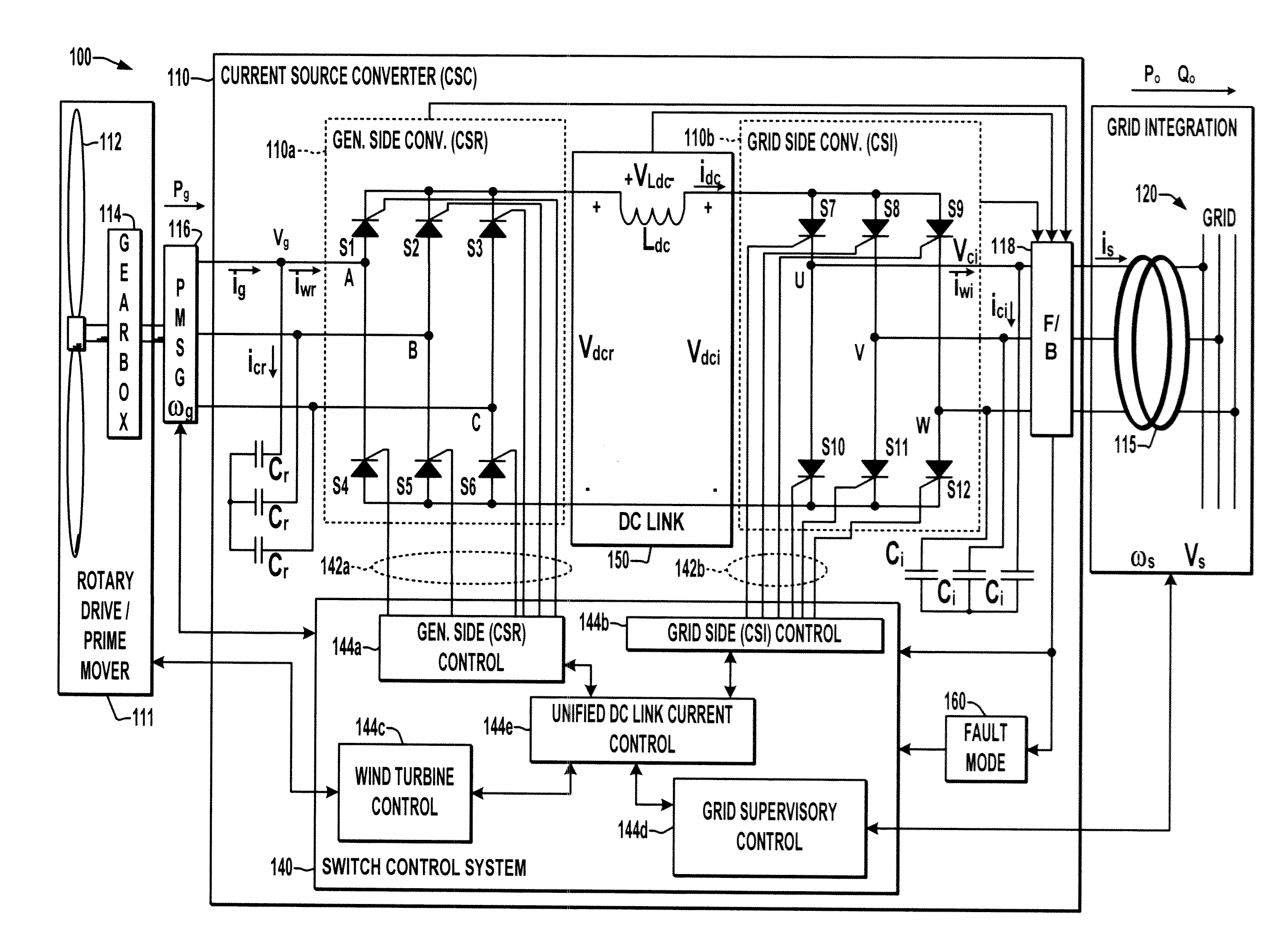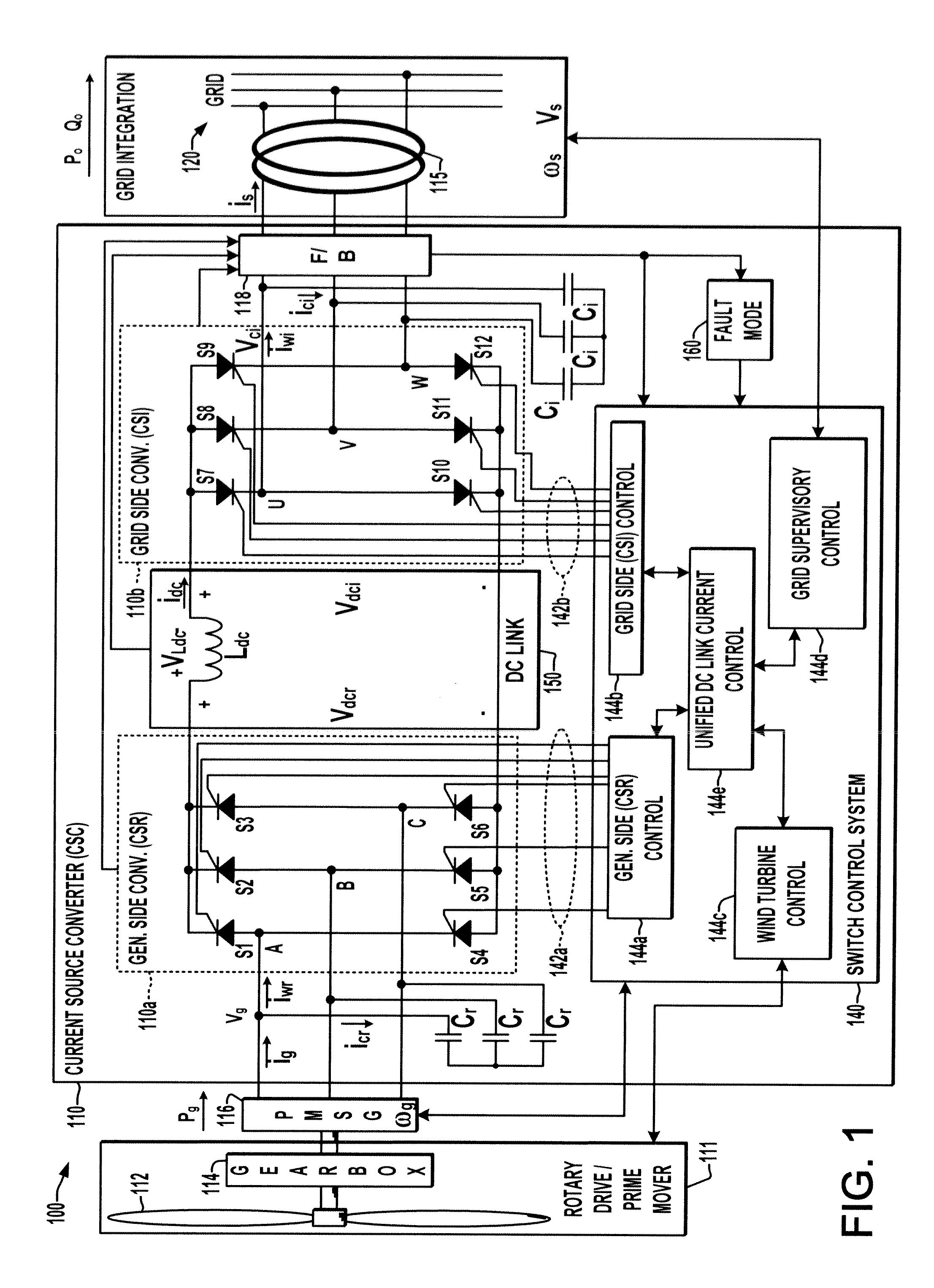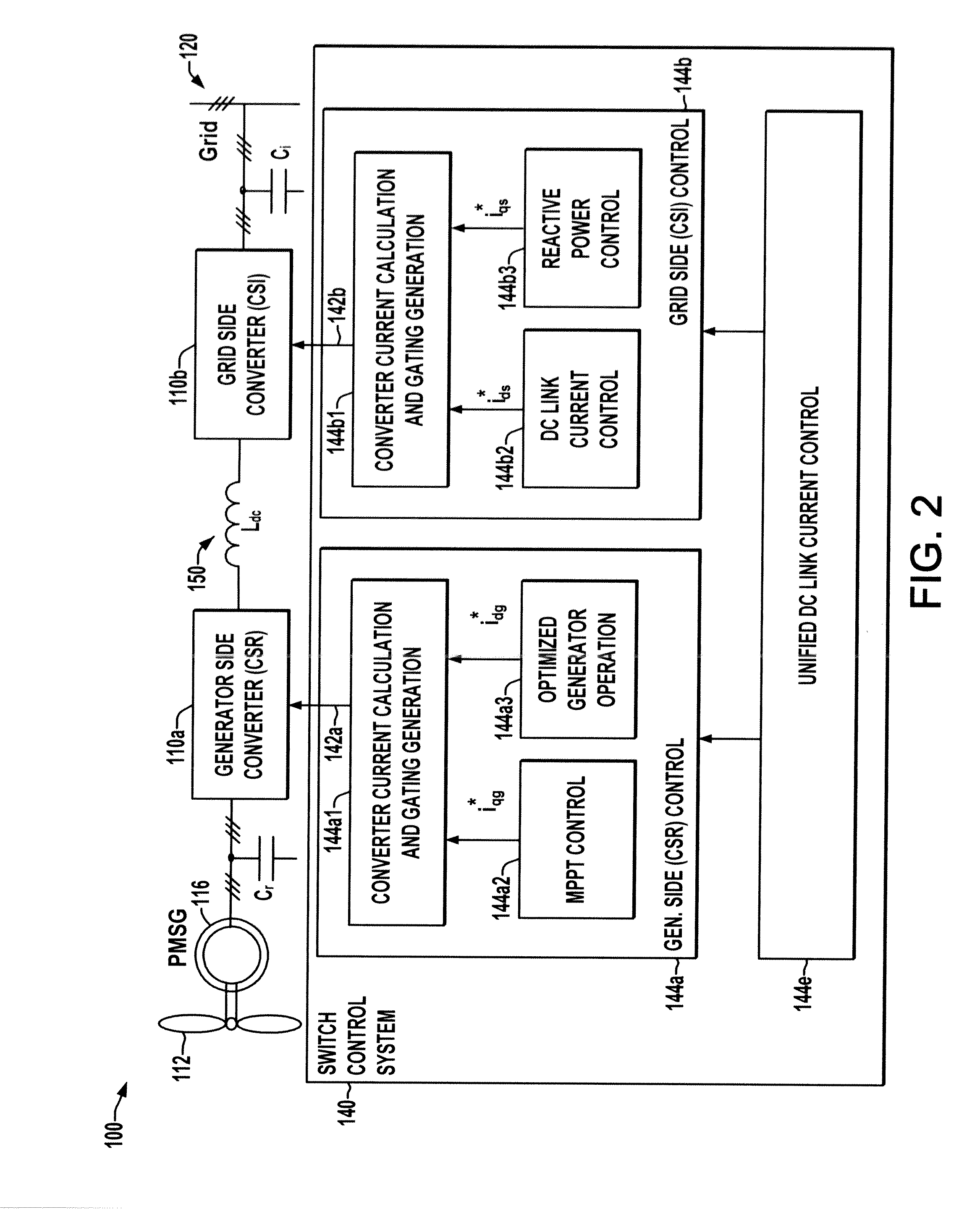Grid fault ride-through for current source converter-based wind energy conversion systems
- Summary
- Abstract
- Description
- Claims
- Application Information
AI Technical Summary
Benefits of technology
Problems solved by technology
Method used
Image
Examples
Embodiment Construction
[0018]Referring now to the figures, several embodiments or implementations of the present invention are hereinafter described in conjunction with the drawings, wherein like reference numerals are used to refer to like elements throughout, and wherein the various features are not necessarily drawn to scale.
[0019]A unified DC link current control scheme is described to facilitate ride through of grid faults in CSC-WECS. Possible implementations assist grid-side active / reactive current regulation to satisfy grid code requirements, and may be fully integrated into the switching control system of the CSC with partial or without additional components for grid fault ride-through capabilities. The coordinated control of the input and output power can also be utilized to smooth power output while maintaining fast control response of the DC link current.
[0020]Referring initially to FIGS. 1-3, FIGS. 1 and 2 illustrate an exemplary wind energy converter (WEC) or wind energy system (WES) 100 in ...
PUM
 Login to View More
Login to View More Abstract
Description
Claims
Application Information
 Login to View More
Login to View More - R&D
- Intellectual Property
- Life Sciences
- Materials
- Tech Scout
- Unparalleled Data Quality
- Higher Quality Content
- 60% Fewer Hallucinations
Browse by: Latest US Patents, China's latest patents, Technical Efficacy Thesaurus, Application Domain, Technology Topic, Popular Technical Reports.
© 2025 PatSnap. All rights reserved.Legal|Privacy policy|Modern Slavery Act Transparency Statement|Sitemap|About US| Contact US: help@patsnap.com



